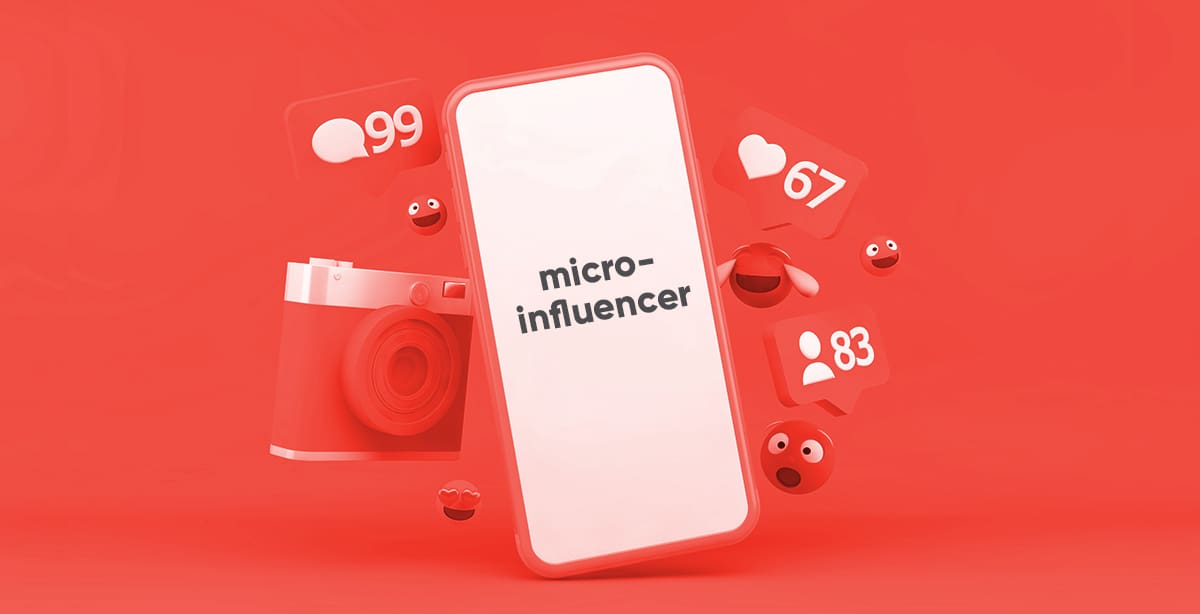Influencers — people with the power to sway consumers’ opinions and, ultimately, their purchase decisions — have long been leveraged by brands looking to elevate their marketing efforts. The most recognizable cases in point can be seen in the wide-ranging celebrity ambassadors/spokespeople brands have recruited to pitch their products over the years. Examples are Michael Jordan and Nike, Britney Spears and Pepsi, Shaquille O’Neal and Papa John’s … and the list goes on.
Influencers and the internet
Perhaps predictably, with the rise of the internet and social media in marketing’s modern era, the practice of harnessing influencers to boost brand awareness and sales has gained even more steam — and it doesn’t appear to be slowing down anytime soon. In fact, in the United States, the total influencer marketing spend is projected to hit nearly $6.2 billion in 2023, marking a rise of more than 23% from 2022. Globally, the influencer marketing industry accounted for $16.4 billion in spending in 2022, a remarkable rise from roughly $1.7 billion just six years previous.
While large portions of this spending are, of course, still lining the pockets of celebrities, the aforementioned social-media surge has also (at least to some extent) leveled the playing field a bit. Thanks to social media’s broad reach and easy, nearly across-the-board accessibility, today’s influencers don’t necessarily have to be household names anymore. And as a result, a powerful new phenomenon has been introduced to the world of influencer branding: micro-influencers.
What is a micro-influencer?
Defined here at Brandon as an influencer with a social media following of 10,000 to 100,000 people, a micro-influencer is an influencer on a smaller level than that at which most celebrities, famous athletes, etc. operate. And while the micro-influencer may not have as many followers as a macro-influencer or a mega-influencer — defined as having 100,000-500,000 or 500,000-plus followers, respectively — micro-influencers do offer some distinct advantages for brands who choose to leverage them over their counterparts with larger followings. Read on to learn some of the reasons your brand may want to incorporate a micro-influencer (or multiple micro-influencers) in its marketing strategy.
5 reasons to use micro-influencers to boost your brand in 2023
Are you looking for new ways to increase awareness of your brand and build more trust for it among consumers? Consider these five compelling reasons that leveraging the help of a micro-influencer (or multiple micro-influencers) might be a winning strategy for your business:
1. Authenticity/relatability
In most cases, micro-influencers are simply normal people who their followers see as “one of us.” Often as a result of their expertise in a particular area or their charming online personality, they’ve just managed to develop a much larger social following than the average person. Further, they’re often highly invested in the online community they’ve created via their social media account(s), and they can typically spend much more time directly engaging with their followers than larger-scale influencers and celebrities are able to.
All of this, of course, can make micro-influencers seem much more relatable and authentic to their followers than big, jet-setting celebrities with huge online followings. In fact, polling has shown that 56% of consumers would prefer to follow “normal people” on social media rather than well-known celebrities, largely because they consider the former to be more authentic.
For brands, the authenticity and relatability consumers often attribute to the micro-influencers they follow create an opportunity to tap into the high levels of trust these influencers have generated among their audience members. When one of these micro-influencers speaks highly of a brand’s products or services, the tight-knit communities they’ve created are often more likely to take their recommendations to heart.
2. Relative ease of developing longer-term relationships
Additionally, it’s typically easier for brands to establish and maintain longer-term relationships with micro-influencers than with macro-influencers, in large part thanks to the typical micro-influencer’s generally higher levels of availability. By doing so, brands can help build on the above-mentioned authenticity aspect of their influencer-marketing campaigns. Think about it: If an influencer posts about a brand once or twice and never mentions it again — and especially if this happens on a regular basis with different brands being promoted — it can come off to consumers as the influencer looking to make a quick buck. A longer-term relationship, on the other hand, allows for multiple posts over time about the brand being promoted, lending a more genuine feel to the influencer’s support of the brand and helping to elevate consumers’ trust of the brand.
3. Quality KPIs
Macro-influencers can boast jaw-dropping numbers in vanity metrics such as follower counts and impressions, giving brands that work with them a clear opportunity to convey their messaging to large numbers of consumers at once. But micro-influencers often deliver stronger performances in some of the areas that can matter most to businesses looking to grow. Among them, micro-influencers often show stronger results than macro-influencers typically do with quality KPIs such as engagement rates (up to 60% higher) and conversion rates (over 20% higher). And for businesses looking to impact their bottom lines and see a higher ROI with their influencer-marketing campaigns, this can make working with micro-influencers a strategically sound way to reach their goals.
4. Strong ability to target niche markets
Many micro-influencers develop their dedicated followings by serving as a leading online voice for a specific niche of consumers. For example, some micro-influencers specialize in offering insights and opinions on beauty products and processes, making them of particular interest to beauty-conscious consumers. Others focus the content they generate specifically on classic cars, or hunting and fishing, or travel and leisure — with dedicated micro-influencers existing for pretty much every topic under the sun. And by tapping into micro-influencers whose content falls into their specific subject areas/industries, brands can get their messaging in front of the exact consumers who are most likely to purchase their products, providing a huge advantage when it comes to targeting specific markets.
5. Affordability
Of course, the more followers an influencer has, the higher the rates they can charge for a brand to work with them. And for some of the world’s biggest-name mega-influencers, demanding well over a million dollars for a single social-media post is not unheard of. While this can enable brands to reach huge numbers of consumers with their messaging, it does so at a price that’s well over what most brands can afford.
Micro-influencers, on the other hand, often charge very reasonable rates that most any brand can afford, with rate examples starting as low as $20 per tweet, $25 per TikTok video, $100 per Instagram post, or $250 per Facebook post. And with these lower prices, brands will often see the higher levels of engagement and conversion mentioned above — resulting in impressive ROI figures for the brands that choose to work with micro-influencers.
Bonus Brandon tip: Further capitalize on the campaign with influencer whitelisting
Is your brand already successfully working with an influencer and looking for ways to build on the influencer campaign’s momentum? Consider influencer whitelisting — a tactic that sees brands tap into a partner influencer’s paid-advertising account to run ads on social media that appear to be coming directly from the influencer himself or herself. These strategically placed ads offer a powerful way to combine the advanced targeting, customization, scalability and attribution capabilities of paid ads with the increased effectiveness of influencer marketing. And because the ads don’t land in the influencer’s social feed, many are open to considering the possibility — especially when proposed by a trusted, long-term marketing partner.
Is your brand ready to leverage the power of the micro-influencer in 2023? At Brandon, our Media and Digital Strategy and Social teams are highly experienced with and adept at identifying and sourcing the right micro-influencers to move your brand forward, then helping to manage a successful relationship that delivers advantages and wins for all involved.
To get started with marketing assistance ranging from identifying and acquiring your brand’s first micro-influencer to launching and managing an influencer-whitelisting campaign with a longtime influencer partner, contact us today.

